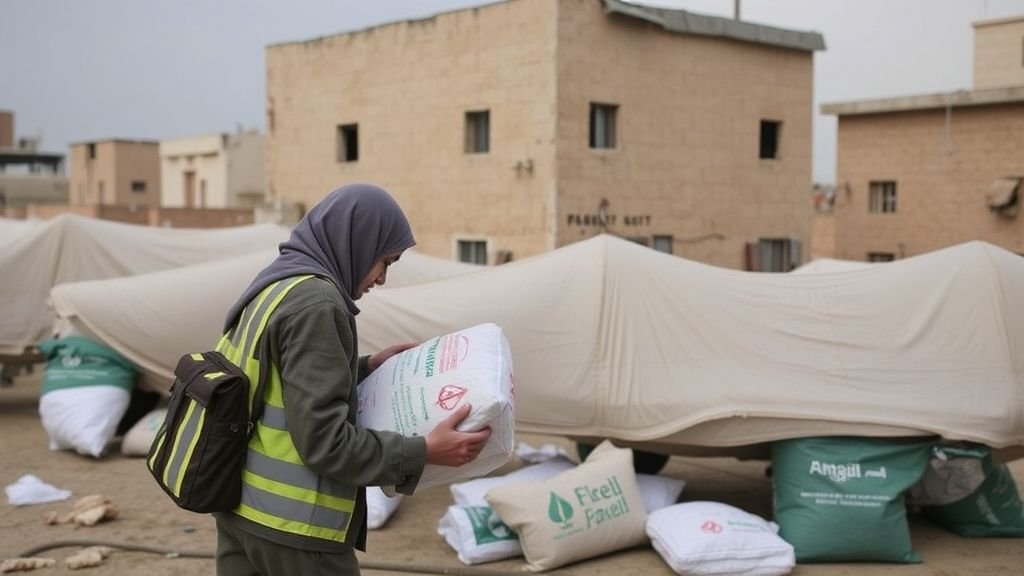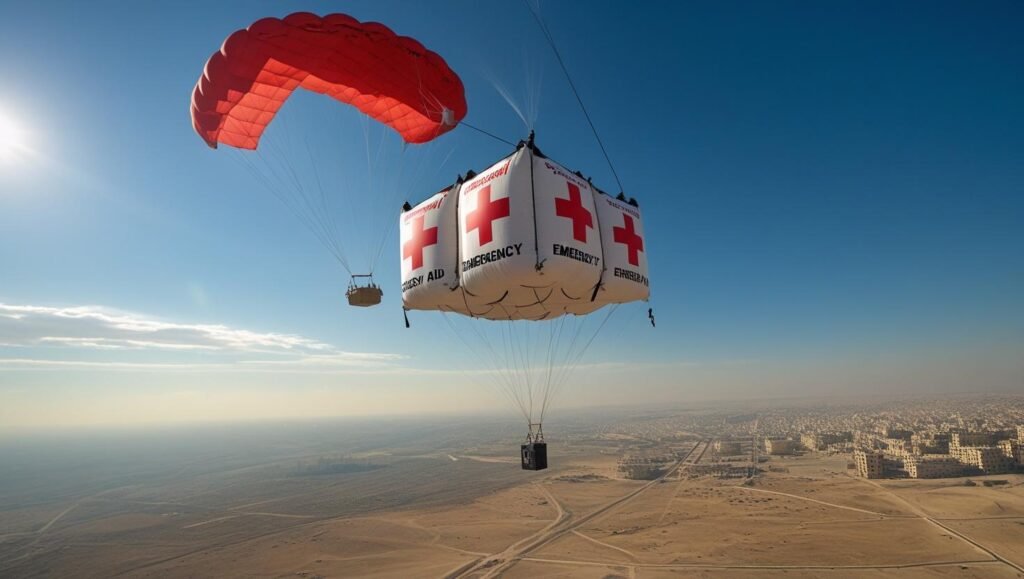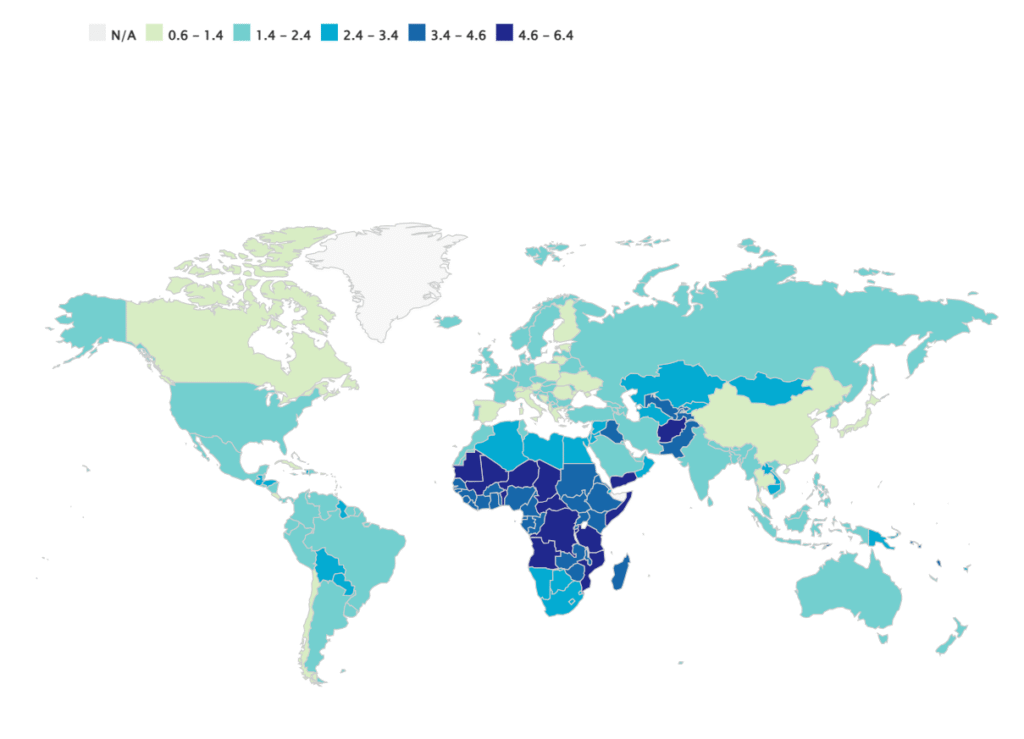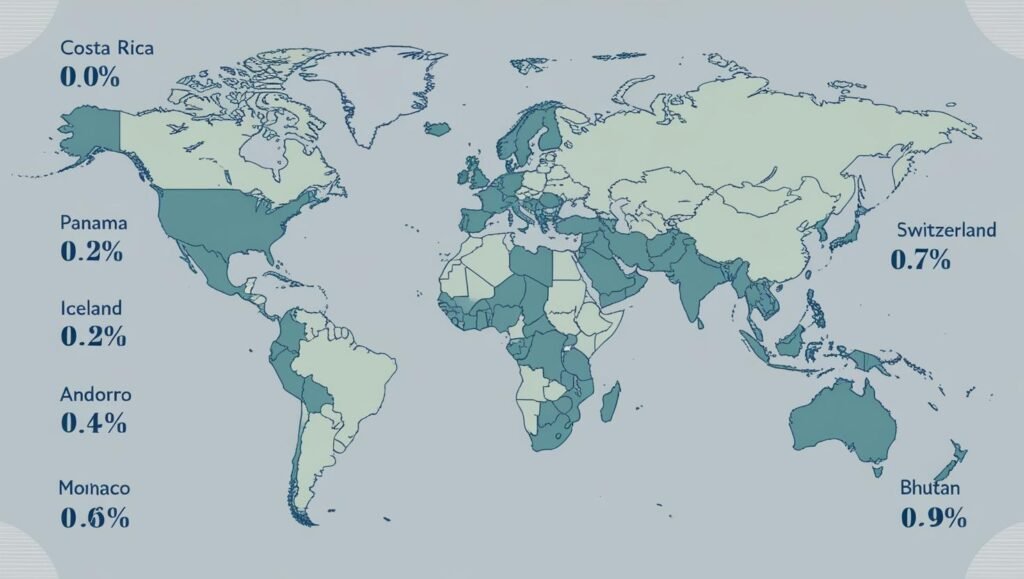Emergency Aid Gaza in the Spotlight
Emergency aid Gaza efforts have intensified as Israel officially approved foreign-led airdrops into the war-torn region. In response to mounting famine and humanitarian crisis, countries like Jordan and the UAE have begun coordinated airdrops of essential supplies—bread, baby formula, and rice—into northern Gaza. This marks a rare move, with Israeli military coordination, to allow foreign aircraft to deliver food to civilians trapped by the ongoing blockade and conflict.
The first countries to act? Jordan and the United Arab Emirates (UAE) — both launching limited airdrop operations coordinated with the Israel Defense Forces (IDF).
Why Emergency Airdrops Are Happening Now
The humanitarian situation in Gaza has worsened drastically in recent months. With land crossings restricted, fuel shortages worsening, and traditional aid convoys often blocked or delayed, emergency aid to Gaza is now falling from the sky — literally.
The UN and aid groups warn that nearly half a million Gazans are facing catastrophic hunger, especially children and the elderly. The airdrops represent a symbolic — and logistical — attempt to address urgent needs.
Which Countries Are Involved in the Gaza Airdrops?
So far, the following nations have been confirmed:
- Jordan: First to respond, sending pallets of food aid via coordinated flights.
- UAE: Quickly joined the mission, focusing on baby formula, rice, and canned goods.
- France and the UK: Reported to be preparing additional relief flights in coordination with Israeli military oversight.
- United States: Has offered logistical and diplomatic support but is not yet conducting its own drops.
How Is Israel Involved in Emergency Aid to Gaza?
The Israeli government and the IDF have authorized and are coordinating with foreign military partners to carry out these airdrops. While they remain skeptical of full-scale UN-led convoys returning soon, Israeli officials say the airdrops are being permitted as part of a “controlled humanitarian effort.”
This is the first major policy shift since the total blockade was enforced months earlier, and reflects growing international pressure to avert famine in Gaza.
Is Airdropping Aid Enough?
According to the World Food Programme (WFP) and Doctors Without Borders, airdrops can help in isolated areas, but they are not a sustainable solution. The sheer scale of Gaza’s needs — with over 2 million people affected — requires daily truck convoys, not just airborne deliveries.

Aid agencies continue to call for:
- Unrestricted land access
- Restoration of fuel and water supplies
- Protection of aid workers and medical staff
- A long-term ceasefire to ensure aid delivery at scale
What Happens Next?
Emergency aid to Gaza will continue by air for now, with more drops expected in the coming days and weeks. The hope is that these measures will buy time — and international attention — for a broader humanitarian solution.
Israel’s approval of the airdrops is a significant development, but pressure is mounting on all sides to allow safe and open land routes for humanitarian aid.
Conclusion: Why the World Is Watching Gaza
The Gaza crisis is not just a regional issue — it’s a global humanitarian emergency. While emergency airdrops mark a pivotal step in providing aid, they also highlight the limitations and urgency of the situation.
As the crisis unfolds, emergency aid in Gaza will remain one of the world’s most closely monitored operations — and one of its most urgent moral tests.
Looking for more articles? Visit our homepage for the latest news, insights, and updates across sports, culture, and more.




